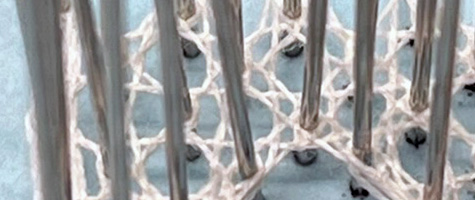Learning Flanders Lace with Kathy Kauffmann: A 4-Pair Experience
I recently had the pleasure of taking a Flanders bobbin lace class taught by the incredibly talented Kathy Kauffmann. Flanders lace is known for its delicate and intricate patterns, and while I usually work with 2-pair lace, this class introduced me to the world of 4-pair lace, where 8 bobbins are crossed and twisted at a single pin-point, compared to the 4 bobbins in 2-pair lace.
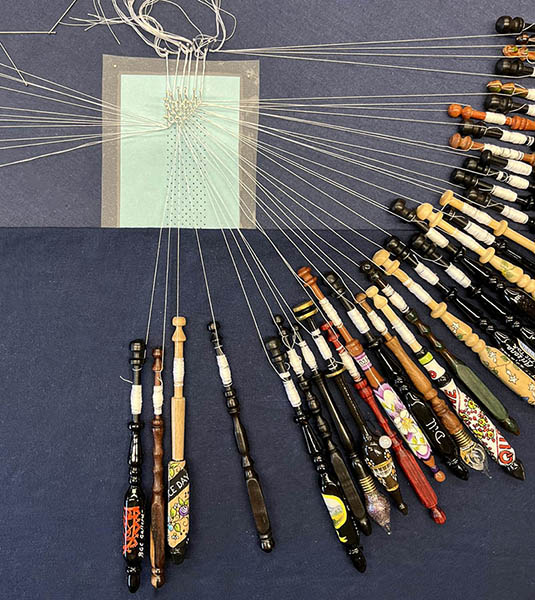
From 2-Pair to 4-Pair: A New Perspective
At first, I wasn’t sure how difficult it would be to switch from 2 pairs to 4 pairs, but the way Kathy explained it, made the transition feel smooth and natural. The process made sense, especially with her patient guidance. However, I quickly realized that snowflakes (a motif we learned in class) are more challenging than traditional spiders. Their thread paths don’t always follow the logical routes I expect, but that made it all the more rewarding to complete them!
One of my favorite aspects of Flanders lace was working with the Flanders ground, a basic stitch that I found both beautiful and satisfying to complete. The finished stitches have a delicate yet dense rose ground-like appearance.
A World of Possibilities in Flanders Lace
In class, we only scratched the surface by learning a few types of Flanders ground, but there are so many more to explore. Some variations are subtle, while others create dramatically different patterns. The thought of discovering more ways to work with this stitch is exciting—I’m already looking forward to continuing my journey with Flanders lace.
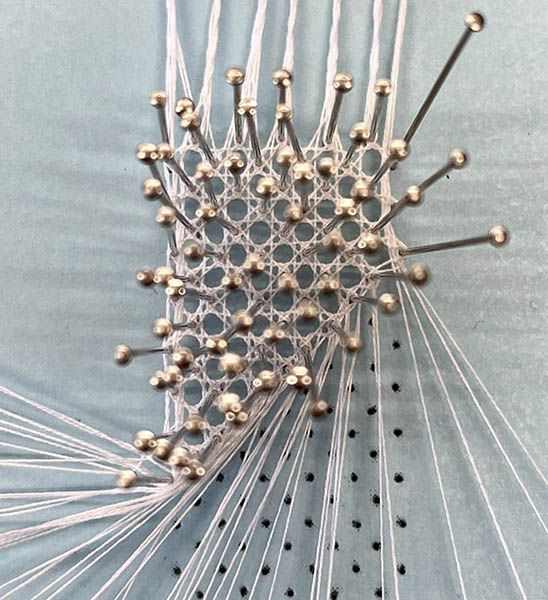
Kathy’s Approach: Starting at the Beginning
As much as beginner patterns can feel slow, Kathy’s decision to start at the very beginning was invaluable. When you’re learning something as different as 4-pair lace, that foundation is essential. I was thrilled when I completed exercise 1, which focused entirely on the Flanders ground. It gave me a huge sense of accomplishment and confidence moving forward.
Kathy’s teaching style was so encouraging. She was incredibly patient, willing to demonstrate techniques multiple times, which was a huge help as I worked through the process. I can’t say enough good things about her as both a teacher and a person—she made the class enjoyable and educational.
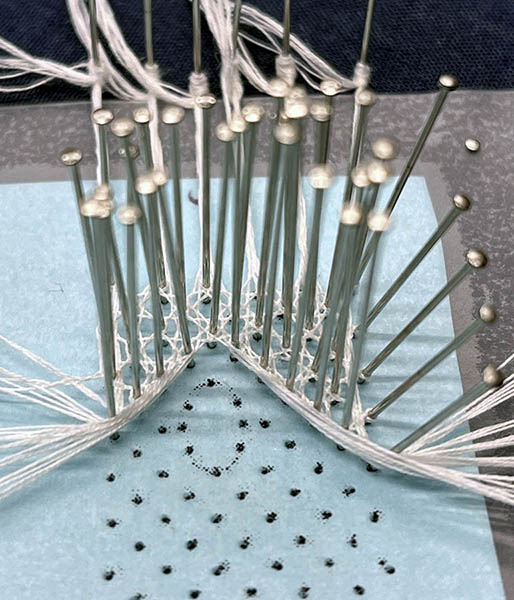
Class Progress: From Simple to Complex
Over the course of the two-day class, I completed both examples 1 and 2, which helped me get comfortable with the basic stitches. I also started example 3, which was slightly more challenging and required more focus, but I loved the progression of difficulty. It felt like I was steadily building my skills.
Looking Ahead: Incorporating Flanders Lace into Future Projects
One of the things that excites me most about Flanders lace is how dense the finished lace appears because of the extra threads at each pinhole. This structure could be invaluable for my wire lace projects. In the previous sample, I noticed that the lace can get lost against a distracting background when viewed outdoors, since there’s so much negative space.
I think the solution may lie in creating a 4-pair Flanders lace wire sample. The increased density should make the lace more visible and distinct, even in outdoor settings, which I’m eager to experiment with.
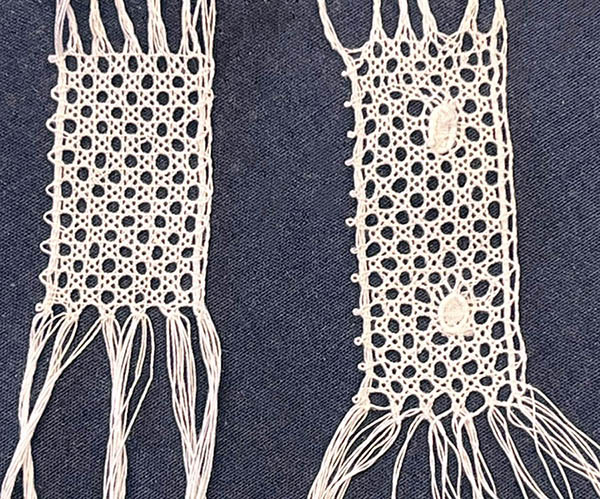
A Glimpse into Flanders Lace History
The Flanders region (now Belgium and part of northern France) has a rich history of lace-making, dating back to the 16th century. Flanders lace became a fashion icon in Europe throughout the 17th and 18th centuries. Though lace temporarily fell out of favor, the incredible skill of Flemish lacemakers—especially with fine linen threads—brought lace back into vogue. This historical context adds an extra layer of appreciation for the lace techniques I learned in Kathy’s class.
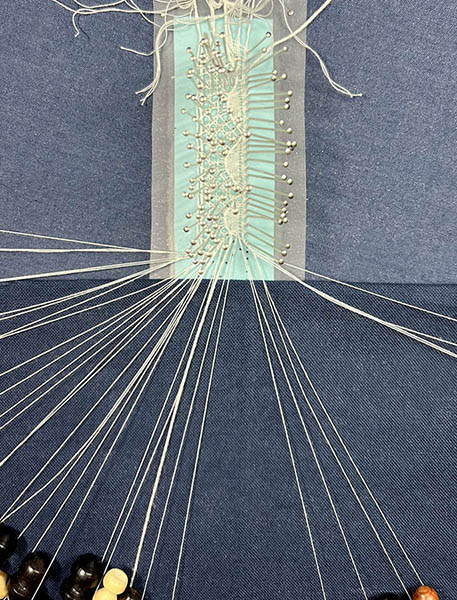
Wrapping Up: A Great Learning Experience
I’m so glad I took this class, and I can’t wait to incorporate what I’ve learned into future projects. Flanders lace is intricate, rewarding, and I’m excited to see where it leads me next.
If you’d like to follow along with my lace making journey, be sure to check out my Instagram (@BobbinLaceNet) or TikTok (@CajahYupMe) for updates and behind-the-scenes content!
